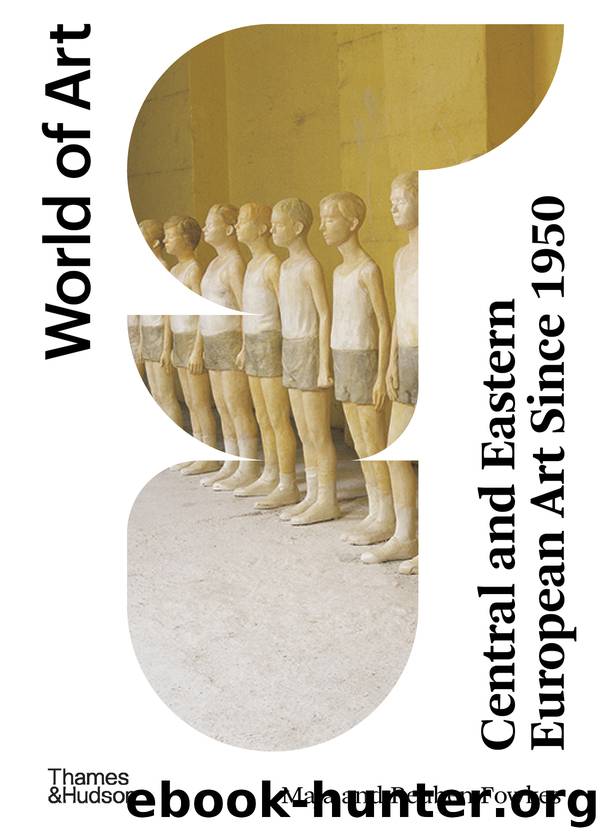Central and Eastern European Art Since 1950 by Maja Fowkes

Author:Maja Fowkes
Language: eng
Format: epub
Publisher: Thames & Hudson
Published: 2020-02-15T00:00:00+00:00
96 CÄlin Dan and Iosif Király, Dataroom (How to Change your Wallpaper Daily), âArt History Archiveâ series, âLesson 1â, 1995.
Adapting to the fast-changing conditions of post-communist economies posed a challenge to many artists working in Eastern and Central Europe, where state support had evaporated but the art market had not yet materialized. Kai Kaljo pointed to the precarity of the situation with ironic humour in her video self-portrait A Loser (1997), in which the artist stands before the camera and makes revealing statements such as âI am an Estonian artistâ and âI earn $90 a monthâ, interspersed with canned laughter. In 1994 Goran Trbuljak displayed a notice on a billboard in Zagreb with the appeal ââ¦old and bold, I search for, galleryâ¦â commenting on the perceived indifference of the art market towards Central European artists, while Mladen StilinoviÄâs banner An Artist who Cannot Speak English is no Artist (1992) diagnosed the state of affairs that obliged artists to adopt a cooperative attitude in their dealings with the international art world. Bulgarian artist Luchezar Boyadjiev, whose work Neo-Golgotha (1994) consisted of three enlarged business suits symbolizing capitalism as the new religion, also dealt with the monetization of the art world in Change (1996), a full-length photographic self-portrait onto which a chart of exchange rates was superimposed.[97]
Download
This site does not store any files on its server. We only index and link to content provided by other sites. Please contact the content providers to delete copyright contents if any and email us, we'll remove relevant links or contents immediately.
The Japanese by Christopher Harding(1086)
Watercolor With Me in the Forest by Dana Fox(753)
A Theory of Narrative Drawing by Simon Grennan(742)
The Story of the Scrolls by The Story of the Scrolls; the M(725)
Glittering Images: A Journey Through Art From Egypt to Star Wars by Camille Paglia(717)
Boris Johnson by Tom Bower(620)
This Is Modern Art by Kevin Coval(598)
The Art and Science of Drawing by Brent Eviston(591)
Frida Kahlo by Frida Kahlo & Hayden Herrera(586)
AP Art History by John B. Nici(575)
Banksy by Will Ellsworth-Jones(569)
War Paint by Woodhead Lindy(551)
Van Gogh by Gregory White Smith(547)
Scenes From a Revolution by Mark Harris(544)
Draw More Furries by Jared Hodges(544)
About Looking by John Berger(543)
Ecstasy by Eisner.;(535)
100 Greatest Country Artists by Hal Leonard Corp(523)
Young Rembrandt: A Biography by Onno Blom(514)
